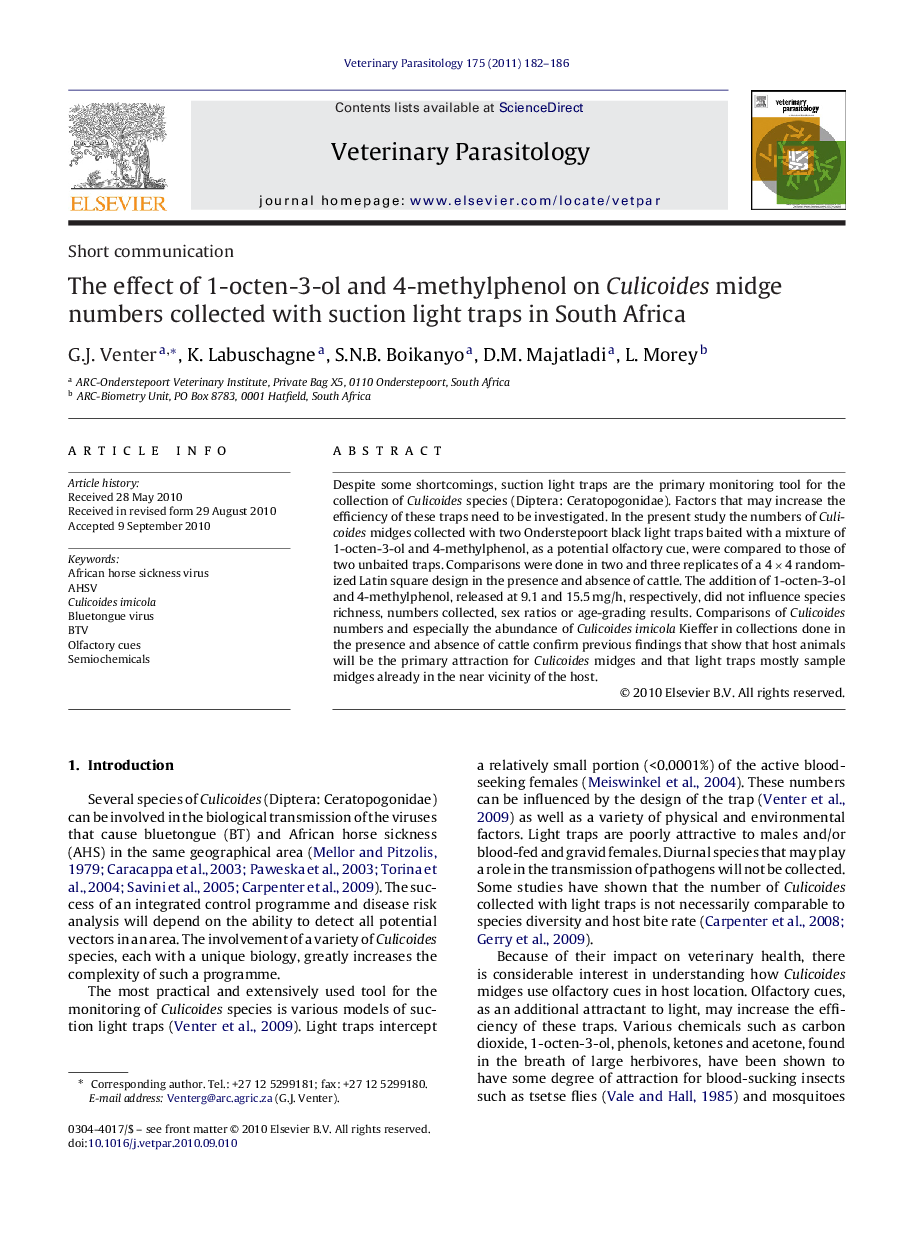| Article ID | Journal | Published Year | Pages | File Type |
|---|---|---|---|---|
| 5806071 | Veterinary Parasitology | 2011 | 5 Pages |
Despite some shortcomings, suction light traps are the primary monitoring tool for the collection of Culicoides species (Diptera: Ceratopogonidae). Factors that may increase the efficiency of these traps need to be investigated. In the present study the numbers of Culicoides midges collected with two Onderstepoort black light traps baited with a mixture of 1-octen-3-ol and 4-methylphenol, as a potential olfactory cue, were compared to those of two unbaited traps. Comparisons were done in two and three replicates of a 4Â ÃÂ 4 randomized Latin square design in the presence and absence of cattle. The addition of 1-octen-3-ol and 4-methylphenol, released at 9.1 and 15.5Â mg/h, respectively, did not influence species richness, numbers collected, sex ratios or age-grading results. Comparisons of Culicoides numbers and especially the abundance of Culicoides imicola Kieffer in collections done in the presence and absence of cattle confirm previous findings that show that host animals will be the primary attraction for Culicoides midges and that light traps mostly sample midges already in the near vicinity of the host.
